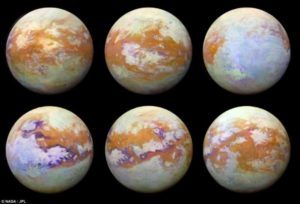
NASA Releases New Mosaics Of Titan, Saturn’s Massive Moon Called As ‘Alien Earth’
Its decades now that we have been receiving grainy images of close looks of Saturn and its moons revealing details, but ever since Titan remained a mystery.
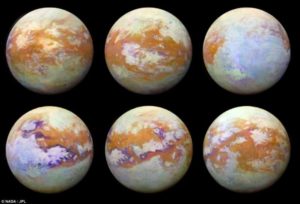
The Huygens probe mission in 2005 to explore Saturn brought us closer than ever to a distant moon, Titan, exposing it to be an ‘alien Earth,’ with rains of methane and rivers, towers like sand dunes and water ocean beneath the surface.
The probe got stopped just after 72 minutes after touching down when it died leaving the carrier Cassini spacecraft to carry on all of its observations alone from orbit.
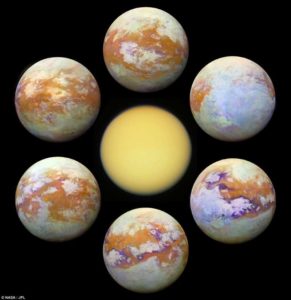
But NASA went through the ordeal and collected 13 years of data from Cassini’s Visual and Infrared Mapping Spectrometer (VIMS) instrument and presented the most detailed global view and allowed us to imagine what Titan might look like if one could see straight through the dense atmosphere there.
‘With the seams now gone, this new collection of images is by far the best representation of how the globe of Titan might appear to the casual observer if it weren’t for the moon’s hazy atmosphere, and it will likely not be superseded for some time to come,’ NASA says.
The thick atmosphere around the alien moon puts up challenges and makes it extremely difficult to study Titan’s surface due to the that aerosols scatter visible light.
To make this work, the space agency focused especially on infrared wavelengths, as the effects of scattering and absorption are weaker there, thus allowing a better and clearer picture.
‘Making mosaics of VIMS images of Titan has always been a challenge because the data were obtained over many different flybys with different observing geometries and atmospheric conditions,’ NASA says.
‘One result is that very prominent seams appear in the mosaics that are quite difficult for imaging scientists to remove,’ NASA explains.
‘But, through laborious and detailed analyses of the data, along with time-consuming hand processing of the mosaics, the seams have been mostly removed.’
To fetch full-color view, the agency for space study combines all the images captured in three different color channels viz., red, green, and blue.
Another part on which the researchers rely on is a technique popularly known as the band-ratio technique to make the ‘seams’ smoother and make all subtle variations more apparent thus revealing some of the surface materials in more better detail.
The Space Agency, NASA, credits all of it to Cassini’s VIMS instrument.
‘It is quite clear from this unique set of images that Titan has a complex surface, sporting myriad geologic features and compositional units,’ NASA says.
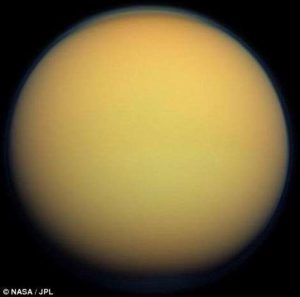
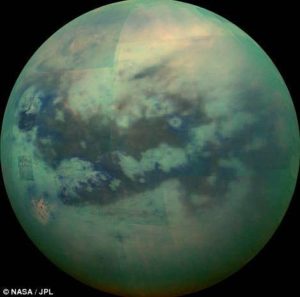
‘The VIMS instrument has paved the way for future infrared instruments that could image Titan at much higher resolution, revealing features that were not detectable by any of Cassini’s instruments.’
Scientists around the world are very much optimistic that there must be life apart from earth. Thus they have been searching for life on any planet in or out of the solar system including moons of other planets. The most important and crucial thing for life to sustain on any planet or moon is water but there have been unsuccessful attempts to find such a place.
You May Also Read: Rescued Thai Soccer Team Boys Tell Tales Of Their Miraculous Escape